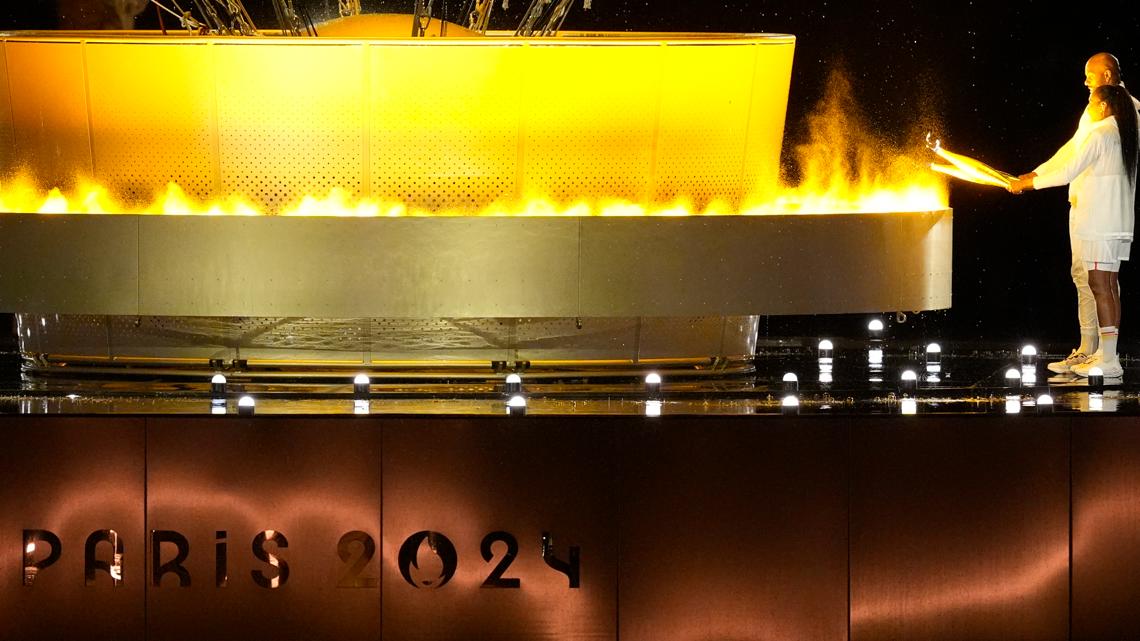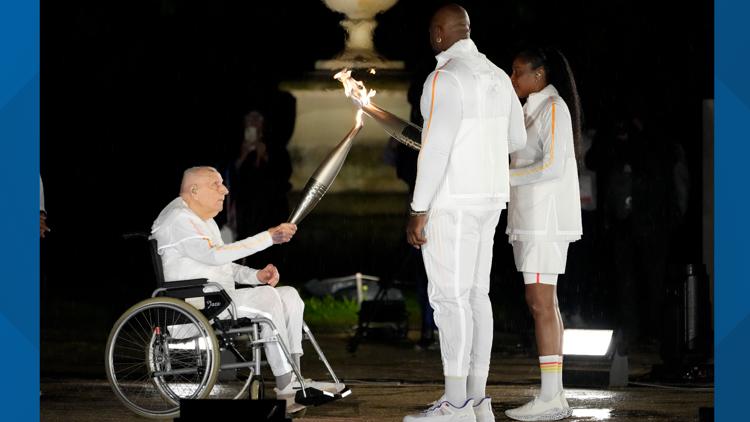PARIS, France — French Olympic gold medalists Teddy Riner and Marie-José Pérec teamed to light the cauldron for the Paris Olympics to end an elaborate but rain-soaked opening ceremony Friday night.
The duo both tilted their own torch toward the cauldron, which quickly became alit in flames. Celine Dion followed with a rendition of Edith Piaf's "Hymne à l’amour” (“Hymn to Love”).
Riner won three golds in judo and Pérec won three in athletics, becoming the first sprinter to win consecutive golds in the 400-meter dash.
The lighting of the cauldron capped an extravagant four-hour ceremony that concluded with a relay of the flame that included many Olympic greats — from France, of course, but also other countries. Rafael Nadal of Spain and Americans Serena Williams and Carl Lewis were among them.
The identity of who would light the cauldron was a closely kept secret until Riner and Pérec learned hours before the ceremony that they had been chosen. Their identities were revealed to the rest of the world only when Charles Coste, the oldest living French Olympic champion at 100 years old, lit both their torches.
Tony Estanguet, the Paris Games chief organizer, said only he knew the identity of “the personality or athlete” he had chosen and he deliberately withheld the information so the secret would not be leaked.


“I really waited until today. I plan to tell the last carrier today, to try to maintain this confidentiality,” Estanguet said earlier Friday.
Recent cauldron lighters have ranged from current stars, retired greats and even political figures, and some Games have featured groups of people sharing the honor together. Notables from recent Olympics were tennis player Naomi Osaka (Tokyo Games), figure skater Yuna Kim (Pyeongchang Games), marathon runner Vanderlei Cordeiro de Lima (Rio de Janeiro Games), ice hockey player Vladislav Tretiak (Sochi Games), a group of seven teenagers chosen by veteran British Olympians (London Games) and ice hockey great Wayne Gretzky alongside basketball player Steve Nash (Vancouver Games).


The cauldron was a ring of flames 7 meters (about 23 feet) in diameter, topped by a 30-meter high (about 100 feet) and 22-meter wide (about 72 feet) hot-air balloon. The design was a tribute to the first flight in a hydrogen-filled gas balloon, made by two French inventors in 1783 from the Tuileries Garden. The cauldron reflects France’s spirit of daring, creativity and innovation and French designer Mathieu Lehanneur created it as a symbol of liberty.
The cauldron is displayed in the heart of the city, in the Tuileries Garden and aligned with the Louvre Museum, the La Concorde obelisk, the Champs-Élysées and the Arc de Triomphe.




